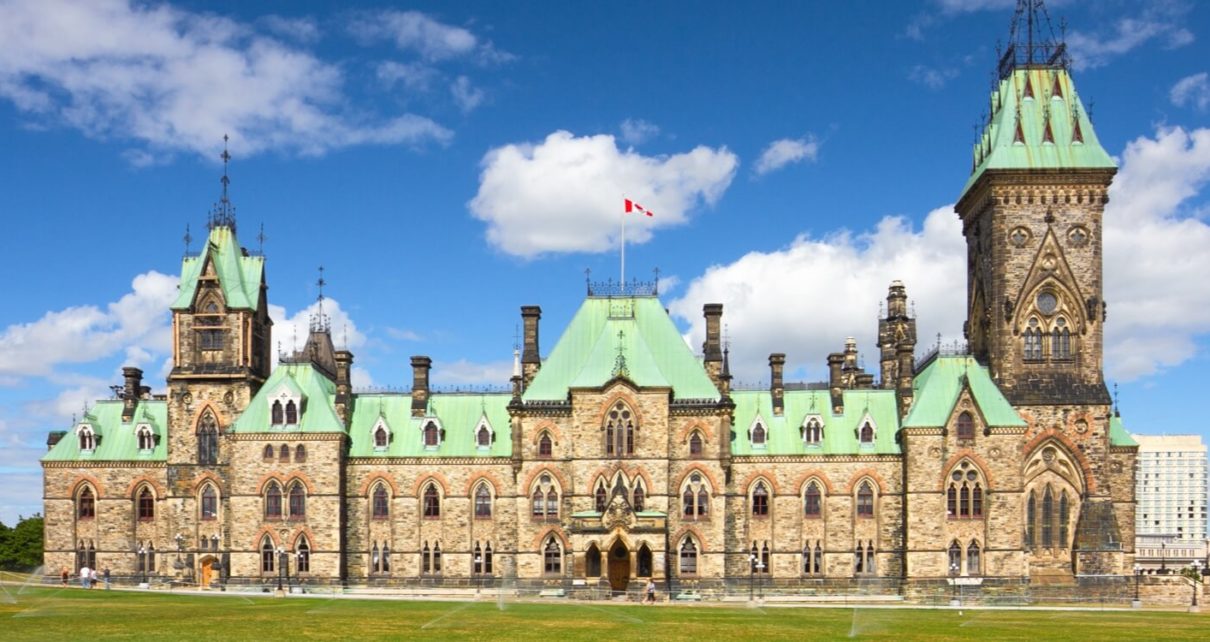Canada’s defence policy is entering a period of significant transition following the election of a new Liberal minority government led by Prime Minister Mark Carney. In a global environment defined by rising geopolitical tensions, war in Europe, and growing competition in the Arctic, defence spending, military readiness, and procurement reform have become central to the national political agenda. This special report examines the 2025 defence platforms of the Liberal Party, as well as those of the Conservative Party, the New Democratic Party (NDP), and the Bloc Québécois. While differing in approach, all major parties have committed to reaching NATO’s 2% of GDP defence spending target and to strengthening the Canadian Armed Forces (CAF) through investments in personnel, infrastructure, Arctic capabilities, and procurement modernization. These commitments—and the degree to which parties can cooperate in a minority Parliament—will play a defining role in shaping the direction of Canada’s defence strategy and its ability to project sovereignty and fulfill international obligations.
The Liberal Party of Canada 2025 Defence platform
Canada Strong: Unite Secure Protect Build
Release Date: April 19
The Liberal defence platform for 2025 focuses on prioritising recruitment and retention, reaching the NATO defence spending target of GDP by 2030, new funding for CAF personnel and their families, defence procurement reform, Arctic sovereignty and major project acquisitions.
Prime Minister Mark Carney stated he will reach the 2% NATO target quickly and “wisely and effectively” and “pull our full weight in NATO”. Since becoming Prime Minister of Canada Carney has spoken of boosting its spending on Canada’s domestic defence industry, research and promoting the sector’s exports to markets in the Indo-Pacific, and specifically in Europe. In Europe PM Carney has sought to position Canada within the European Union’s newly established ReArm Europe, a EU created fund that will enable, bolster and build greater industrial capacity in the European defence industry and rearm EU member states.
Support for Military Personnel
The Liberals propose supporting military personnel through increased pay and broader investments in housing, healthcare, and childcare—improvements intended to enhance quality of life and retention. The recruitment process will be modernized to ensure the CAF can attract and maintain a capable force, while addressing internal challenges such as military sexual misconduct which is prioritized to improve institutional culture and accountability. Investments will also extend to the Canadian Reserves and Rangers, enhancing their role in national defence
Capabilities
On the capability front, the plan outlines acquiring new submarines and heavy icebreakers through the National Shipbuilding Strategy, expanding fleets of aerial and underwater drones, and procuring Canadian-made airborne early warning and control aircraft. Land-based upgrades include the addition of self-propelled artillery systems and ground-based air defence capabilities.
The strategy also emphasizes domestic industry and innovation. It commits to buying Canadian products and prioritising the use of domestic raw materials such as steel, aluminum, and critical minerals. The liberals are also pledging to establish the Bureau of Research, Engineering and Advanced Leadership in Science (BOREALIS). They indicate this will be a research agency to ensure advanced technologies are pioneered in Canada including AI, quantum computing, and cybersecurity and that there are Canadian-developed solutions that support CAF and the Communications Security Establishment.
Defence Procurement and Canadian Coast Guard Reform
Additionally, the Liberals propose a new Defence Procurement Agency which will centralize acquisition processes and adopt risk-based approval models to increase efficiency. PM Carney has also indicated through his campaign that this defence procurement reform could give preference to the Canadian industry. Lastly, the Liberals will also look to reform the Canadian Coast Guard and provide the CCG with updated equipment and a new mandate to support NATO maritime surveillance and Maritime security.
The Conservative Party of Canada 2025 Defence platform
Release Date: April 22
The Conservative Party defence platform for 2025 focuses on rebuilding Canada’s Armed Forces and security through procurement reforms, increased defence spending, and a plan to grow the Canadian Armed Forces through expanded bases and increased personnel. The plan indicates a Conservative government would adhere to the previous Liberal government’s target of NATO’s minimum 2% target by 2030.
Defence Procurement Reform and Accountability
Beginning with procurement reform, the Conservative would re-establish previous Conservative policy, including the Cabinet Committee on Military Procurement. The Harper Conservative government in 2014 had launched the Defence Procurement Strategy and created the Defence Procurement Secretariat within Public Works and Government of Canada, now PSPC. The 2025 Conservative platform also indicates it would also recreate a new Privy Council Office Secretariat to ensure that military production issues are fully integrated into government decision-making. On accountability the conservatives pledge to work closely with Canada’s defence industry and appoint a minister to oversee responsibility and accountability for Canadian defence projects.
Capabilities and Platforms
Major defence acquisitions in the platform include replacing the Royal Canadian Navy’s Victoria-class submarine fleet with new modern submarines. As concerns about Arctic security grow, the Conservative party also seeks to acquire four new icebreakers, two for the Royal Canadian Navy and Coast Guards. This is two more icebreakers than what is currently earmarked for RCN and CCG. Other capabilities and platforms for the CAF include tactical helicopters, airborne Warning and Control System (AWACS) and a new satellite ground station in the Arctic.
Infrastructure
The Conservative plan indicates a series of military installations and infrastructure-focused investments predominantly in the Canadian arctic and the North. These include Northern Operational Support Hubs and a new base in Churchill, Manitoba, to accommodate new polar icebreakers and support commercial shipping. Other bases and upgrades include those in Iqaluit, with the CPC pledging to develop the first permanent Arctic military base and a full base in Inuvik to house fighter jets and Husky tankers. On infrastructure, the Conservatives would have facilitated the construction of an Arctic Security Corridor from Yellowknife to Grays Bay, Nunavut, to strengthen regional security. This project is being touted for its dual-use.
Personnel
On personnel, CPC aims to invest in infrastructure development and supporting CAF personnel by building 6,000 new homes on Canadian Forces bases. The strategy includes creating a new Canadian Army reserve unit at Whitehorse and restoring Operation NANOOK to its full operational capacity. To further increase military presence, the party aimed to address the Canadian Armed Forces’ recruiting crisis by increasing the number of Reserve Forces to 30,000 and Regular Forces to 71,500. Additionally, Conservatives propose doubling the size of the Patrol Group of the Canadian Rangers from 2,000 to 4,000 and expanding the junior Canadian Rangers by creating 10,000 cadet spots.
The New Democrats 2025: Defence platform
Made for People, Built for Canada
Release Date: April 19
The NDP defence platform for 2025 emphasizes a Canada-focused approach, advocating for the cancellation of existing contracts for the construction of fighter jets and aircraft in the United States, and the relocation of production to Canada. This strategy aims to meet Canada’s defence needs while simultaneously supporting Canadian assembly jobs and leveraging domestic expertise and capacity for maintenance.
In relation to NATO’s target of allocating 2% of GDP to defence spending, the NDP is committed to achieving this benchmark by 2032, which is two years later than the timelines proposed by both the Conservative and Liberal parties. To facilitate this goal, the NDP plan includes a commitment to construct 5,000 new affordable homes to address the housing shortage within the military. Jagmeet Singh has remarked, “The world is less safe and predictable today than it has been for decades. Canadians expect our military to be capable of protecting them at home and contributing to a safer and more peaceful world… Too often, we have left our Armed Forces without the equipment they need and the support they deserve. It’s time to change that – to recruit, protect, and respect Canadian Armed Forces members.”
Additionally, new investments in defence spending will encompass salary increases for CAF personnel, the procurement of new equipment to ensure their safety, and the provision of healthcare and mental health services to CAF members and veterans without delays.
The NDP defence strategy also includes plans to enhance its military presence in the Arctic to safeguard Canada’s sovereignty in the region. This will involve the establishment of new marine search and rescue stations in Nunavut and the construction of new small craft harbors. The enhancement of the Canadian Rangers’ capacity, along with ensuring they receive timely compensation and reimbursement for the use of their own equipment, is a priority for the NDP. Protecting Canada’s Arctic sovereignty should not solely concentrate on military expenditures but also on investments in Northern communities and their residents. The NDP proposes improving educational facilities, providing more reliable power sources, and enhancing healthcare services throughout Canada’s Arctic, as well as investing in housing, starting with support for the Nunavut Housing Corporation’s Nunavut 3000 plan.
The Bloc Québécois 2025: Defence platform
Release Date: March 29, 2025
As part of their party platform, the Bloc Québécois, like other parties, is committed to allocating 2% of GDP to defence. This marks a significant shift in the Bloc’s traditional stance on defence spending and the Organisation du Traité de l’Atlantique Nord. This initiative will leverage Quebec technology to strengthen Canada’s armed forces and enhance partnerships with NATO and European allies. Regarding procurement, the party aims to secure the source codes for the F-35 aircraft that Canada is currently purchasing from the United States. The BQ proposes if obtaining the code proves unfeasible, the contract should be terminated, and alternative partners will be sought. The party will also advocate for a reevaluation of defence procurement, prioritizing international joint development partnerships, particularly with European allies, such as the PolarMax icebreaker model developed by the Davie shipyard. Notably, Quebec’s defence and shipbuilding industry provides substantial potential benefits to the provincial economy and Canada’s capabilities. The Bloc Québécois will propose expedited planning for the acquisition of the next generation of fighter aircraft, ensuring early involvement of the Quebec and Canadian aerospace sectors from the design phase. Similar to the NDP and the Liberals, the Bloc Québécois will work to enhance territorial sovereignty in the Arctic by leveraging polar icebreakers.
Conclusion
The defence platforms outlined by Canada’s major political parties—Liberal, Conservative, NDP, and Bloc Québécois—demonstrate a rare consensus on the importance of reaching NATO’s 2% GDP defence spending target and strengthening the Canadian Armed Forces. Despite differences in timelines and emphasis, each party has committed to supporting the CAF’s core mission: defending Canada from coast-to-coast -to-coast. Their platforms include major investments in personnel, infrastructure, procurement reform, and Arctic sovereignty—areas vital to both domestic security and Canada’s international obligations.
These commitments will help shape the direction of the Liberal minority government under Prime Minister Mark Carney, as well as influence the broader defence industry, Canada’s global standing, and its ability to respond to evolving threats. However, with a Minority government under the Liberal Party, the question remains: will the Liberal minority be able to work with other parties to meet the 2% goal, acquire major capabilities, boost recruitment and retention, and implement meaningful procurement reform? Cooperation will be essential to building out critical infrastructure and securing Canada’s presence—particularly in the Arctic—at a time when geopolitical tensions demand unity and resolve.
Photo: The Canadian Parliament East Block building via Canadian Parliamentary website.
Disclaimer: Any views or opinions expressed in articles are solely those of the author and do not necessarily represent the views of the NATO Association of Canada.




